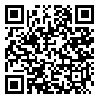Volume 16, Issue 88 (2019)
FSCT 2019, 16(88): 17-26 |
Back to browse issues page
Download citation:
BibTeX | RIS | EndNote | Medlars | ProCite | Reference Manager | RefWorks
Send citation to:



BibTeX | RIS | EndNote | Medlars | ProCite | Reference Manager | RefWorks
Send citation to:
Shayan T, hakimzadeh V, shahidi noghabi M. Modeling the Efficiency of Ultrafiltration Process in Purification of Microfiltered Raw Sugar Beet juice by Artificial Neural Network. FSCT 2019; 16 (88) :17-26
URL: http://fsct.modares.ac.ir/article-7-27190-en.html
URL: http://fsct.modares.ac.ir/article-7-27190-en.html
1- Department of Food Science and Technology, Quchan Branch, Islamic Azad University, Quchan, Iran.
2- Department of Food Science and Technology, Quchan Branch, Islamic Azad University, Quchan, Iran. ,v.hakimzadeh@yahoo.com
3- Department of Food Chemistry, Research Institute of Food Science and Technology, Mashhad, Iran
2- Department of Food Science and Technology, Quchan Branch, Islamic Azad University, Quchan, Iran. ,
3- Department of Food Chemistry, Research Institute of Food Science and Technology, Mashhad, Iran
Abstract: (8482 Views)
The ultrafiltration process as one of the membrane processes based on pressure can replace with the conventional method of liming-carbonation as a new method in sugar industry. In this research, reduction of hardness, increasing the non-sugar rejection components and improving the purity of permeate flow were modeled during the treatment of raw beet syrup with ultrafiltration by artificial neural network. The ultrafiltration process was carried out at three temperatures of 30, 40 and 50 ° C, three pressures in the membrane 1, 2 and 3 times in eight intervals of equal time of 1 to 60 minutes. The best model for reduction of hardness was obtained with a hidden layer, the number of 13 neurons, the tangent transfer function, the momentum learning law, and the percentage of data 40, 35, and 25 for training, evaluation, and test, respectively. The variation of non-sugar rejection compounds with a hidden layer, 15 neurons, tangent transfer function, Levenberg learning law, and assigning 50, 5 and 45 percent of the data to training, evaluating and testing with the least error and the highest correlation coefficient during modeling. Improvement of the purity of permeate flow during ultrafiltration with a hidden layer, 18 neurons, sigmoid transfer function, Levenberg learning law and data percentages 60, 15 and 25 for training, evaluation, and testing created the best network. Also, the highest correlation coefficient between laboratory data and predicted values with the model was obtained for hardness variation, non-sugar rejection compounds and purity, 0.892, 0.985 and 0.985 respectively.
Article Type: Original Research |
Subject:
Statistics, modeling and response levels in the food industry
Received: 2018/11/14 | Accepted: 2019/04/7 | Published: 2019/06/15
Received: 2018/11/14 | Accepted: 2019/04/7 | Published: 2019/06/15
Send email to the article author
| Rights and permissions | |
 |
This work is licensed under a Creative Commons Attribution-NonCommercial 4.0 International License. |






